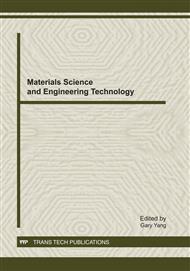p.114
p.121
p.127
p.133
p.137
p.141
p.147
p.153
p.159
Adaptive Slicing for Fused Deposition Modeling and Practical Implementation Schemes
Abstract:
Fused Deposition Modeling (FDM) is one of the most popular Rapid Prototyping (RP) techniques. Initially used as means of producing 3D prototypes aiding in rapid product development, FDM found a significant application in medical models and with machine and material improvements is currently destined to be a true manufacturing process, challenging some of the traditional approaches. The material characteristics and part qualities however, are inferior, considering the heterogeneous structures characterized by the air gaps resulting from raster orientations. Current research is focused on improving the mesostructure through appropriate deposition schemes, adaptive slicing being one of the approaches. This paper reviews some of the adaptive slicing schemes and discusses software and hardware developments undertaken for the practical implementation of one of the schemes for producing test parts.
Info:
Periodical:
Pages:
137-140
Citation:
Online since:
January 2012
Authors:
Price:
Сopyright:
© 2012 Trans Tech Publications Ltd. All Rights Reserved
Share:
Citation:


